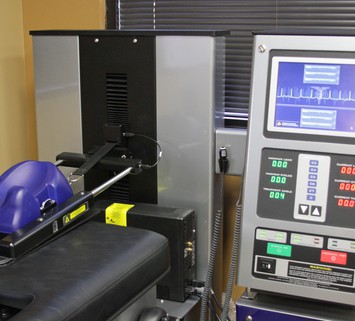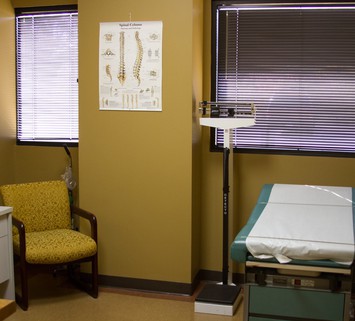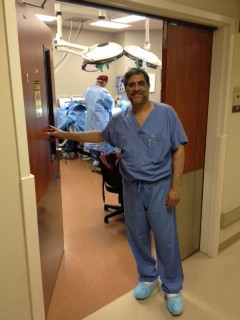Recovering from surgery—especially spine surgery, which has a much more restrictive recovery process than others—can be intimidating enough on its own. Adding onto that the concerns born from being in a hospital environment during a pandemic can feel outright daunting. However, the recovery process itself is only affected by COVID-19 in very limited ways. As long as you have a thorough conversation with your doctor about what to expect, what extra measures are worth taking, and how to protect yourself both from the virus and from postoperative complications, you should be able to resume your normal life (with significantly less pain than pre-surgery!) within the usual recovery period.
While your doctor will likely go over all of the relevant pre- and postoperative information and procedures you need to be aware of, some of the most common questions and concerns are discussed below.
What is the Success Rate of Spinal Surgery?
The success rate of spinal surgery depends on the type of surgery being performed and may vary accordingly. For example, spinal fusion surgery—one of the most common surgical procedures performed on the spine—involves permanently fusing two vertebrae together within your spine to prevent damage from friction. This type of surgery’s success is judged based on the patient’s pain relief over time as they recover post-surgery, but generally sees 70% to 90% success. Your surgeon will take into account the type, frequency, and intensity of the pain you experience before offering a diagnosis and treatment plan, but as long as the goal of lasting pain relief without complications is achieved, your surgery will be deemed a success!
How Painful is Back Surgery?
Chances are high that if you’re considering back surgery of any kind, you have already had a variety of experiences with pain management and/or pain medication, and you’re already in enough pain that you can’t go about your regular daily life anymore. Otherwise, surgery would not be a prioritized option. That being said, your recovery won’t be without its share of difficult times, but your surgeon will have worked closely with you to determine the best possible regimen for pain management while you heal.
When you first wake up after surgery, you’ll have an IV administering fluids and pain medication while you regain consciousness. After a handful of hours, you’ll be taken to a regular hospital room where your breathing and pain levels will be monitored, and medical professionals can keep an eye out for signs of infection. Additionally, you’ll begin to speak with those in charge of your occupational and physical therapy, where you’ll learn certain movements you can start working on within the first few days after surgery. One of the first things you’ll learn is the log roll, which requires you to keep your knees together and back completely straight as you:
- Seat yourself at the edge of your bed
- Lay down while lifting your legs to the bed
- Roll onto your back.
During your hospital stay, your physical therapist will also discuss what exercises will help you once you get home, what to do when you return to work, and what to expect and/or monitor overall.
Support from family members, friends, coworkers, and anyone else willing to help can make a huge difference in the ease of a patient’s recovery. You will usually need a family member or friend to be available after your surgery so that your surgeon can communicate next steps with them while you rest. Many exercises and parts of your daily routine may require assistance to be performed correctly, and the more healing activities you’re able to perform the right way, the less pain you will experience as you heal.
Can You Walk After Back Surgery?
Walking is encouraged in as little as 24 hours after your surgery (depending on the type of surgery you’ve had—be sure to seek medical advice from your surgeon if you are concerned). During that first 24 hours, you’ll be shown how to put on and take off a back brace that will help you keep your spine properly positioned as you go about your physical therapy. After that, however, you’ll be encouraged to try standing and taking a few steps at a time. This helps to prevent side effects such as:
- Blood clots
- Pneumonia
- Pulmonary embolism (which could lead to stroke), and
- Digestive issues that could exacerbate your pain as you heal.
Your physical therapist may push you a bit during these walks to ensure that you’re moving enough that the above possibilities are less of a risk. If your pain levels don’t improve with regular dosing as maintained by your nurses, please contact a health care professional right away. The sooner your pain is treated properly, the less likely you are to need further doses.
Because hospitals are currently treating patients with COVID-19, the use of hand sanitizers will be a constant necessity during your inpatient recovery period. While you should be far away from anyone diagnosed with the virus, extra precautions will be taken to ensure that you are at little to no risk of contracting it while you heal.
What Can You Do After Spinal Surgery?
Your physical and occupational therapists will go over a thorough list of things you can and cannot do after your surgery. Most activities on the “Do Not” list will move back over to the “Do” list within the first few weeks after surgery. Ideally, you will find that you can do things once you’ve healed that you were completely unable to do before your surgery.
Additional information you’ll be given for when you continue recovery at home will include:
- How to sit
- How to lay down/sleep
- How to practice wound care while keeping an eye out for redness and drainage (signs of infection)
- How to maintain personal hygiene (a raised toilet seat may help)
- What level of exercise and strain is acceptable (you should not lift anything heavier than a gallon of milk during the first week or two of recovery)
Your primary care physician, surgeon, and physical and occupational therapist should all provide any information you could possibly need about your surgery and recovery. Being informed can make a huge difference in anxiety levels before the procedure and during the recovery period. If you ever have questions that you feel were not answered or find information that contradicts what you and your surgeon have discussed, please contact them and go over your concerns until you feel confident in the upcoming process. Ultimately, the goal is for you to have an improved quality of life, and it’s important that you know what to expect on the way to achieving that goal.
To learn more about the spine surgery recovery process, especially during a pandemic, reach out to the spine specialists at Texas Spine Center. From minimally invasive spine surgery to non operative care, Texas Spine Center has the expertise and advanced technology to yield life-changing results. Schedule an appointment today to start your journey towards a pain-free life.



